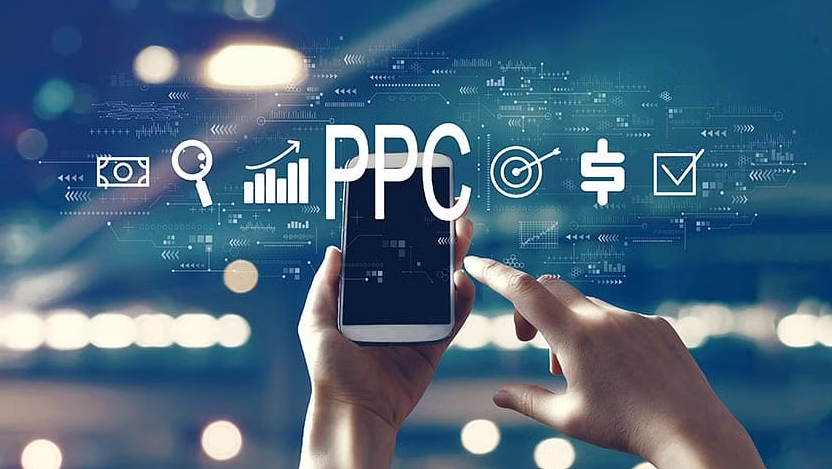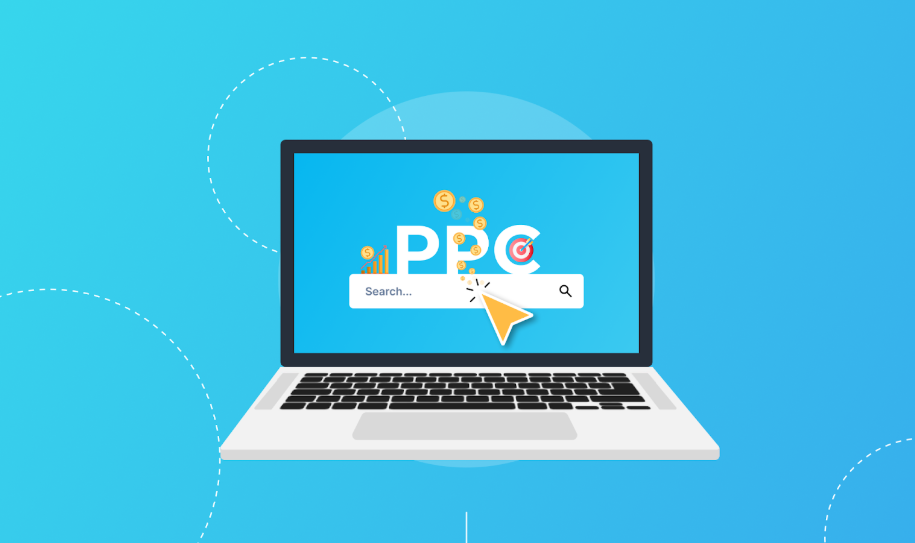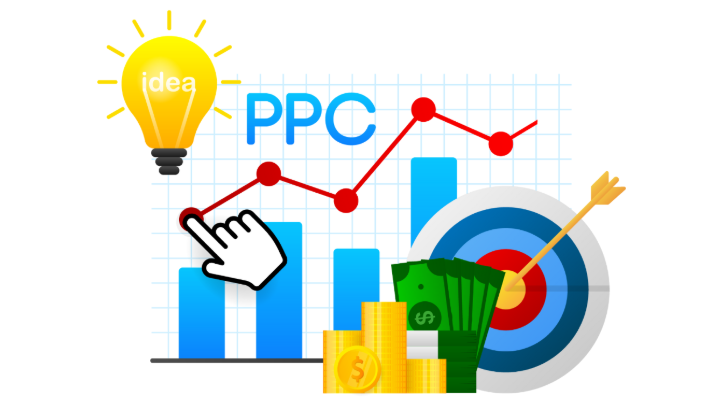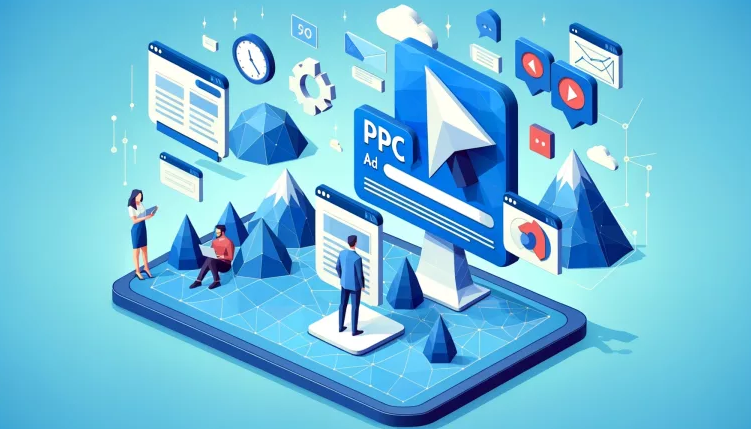An Introduction to Pay-Per-Click
Pay-per-click (PPC) marketing on digital platforms stands out as a critical promotional technique for companies seeking to extend market reach in the quickly evolving marketing environment for digital advertising. This advertising system works more efficiently than other conventional advertising since, via PPC, the owners of web pages receive a fee every time a specific ad is clicked.
The strength of PPC is that it provides highly targeted and measurable results, making it possible for marketers to reach particular categories of people. Advertisers can choose what they want to advertise, when they want it, how often, and for how much in the following ways: Audience targeting benefits from real-time metrics and insight, which means that businesses can more effectively improve long-term PPC strategies for better results and return on investment.
That level of control and accountability has made PPC one of the preferred strategies for marketers who want to base their marketing decisions on data.

Understanding How PPC Operates
At the core of PPC is the auction process, where advertisers bid for ad placement. These bids influence the cost per click, but ad relevance and quality are crucial in determining placement. Keywords are essential as they connect user searches to ads.
Choosing effective keywords ensures ads reach users searching for specific products or services. Once a bid is placed, algorithms evaluate ad quality, relevance, and the bid amount to decide placement on search results pages.
This system favours high-quality advertisements since those that provide relevant information are encouraged. This makes PPC a vibrant living campaign that requires constant keyword research or adjustment of bid prices. It is a dynamic process which involves much assessment and adjustment to accomplish improvements within identified key performance indicators.
Different Forms of PPC Advertising
PPC advertising comes in various formats, each tailored to specific marketing objectives. Search ads are displayed on search engines’ result pages and aim at already interested and relevant users. Organic search results are text-based ads placed on the side of search results.
Display ads differ as they are showcased on websites that are part of an ad network, using visual elements to catch the user’s eye. These can include images, videos, or banners and are designed to capture attention even when users are not actively searching.
Shopping ads showcase products directly within search results and include essential details such as price, product image, and merchant information, making them ideal for e-commerce businesses. Remarketing targets users who have previously visited a website, presenting ads that remind them of their initial interest and encourage them to return and complete a purchase.
The other form is video ads, typically used on YouTube and other related social media for sharing attractive, full multimedia content with people. On the other hand, social media ads use Facebook, Instagram, and LinkedIn to reach users with ads based on social media activity and interests. All the types of PPC advertising are distinguishable by their unique features, which makes it easier to choose the most suitable one for a specific case.
Advantages of Pay-Per-Click Marketing
PPC marketing offers unmatched precision in reaching a target audience. It allows advertisers—to some extent—to choose the kind of audience, the geographical region, or even the hour of the day for which the ads are intended. This level of segmentation helps send relevant messages that will trigger engagement and the required number of conversions.
The last advantage is the capability to obtain results promptly. Unlike organic search engine optimization, which can take months to show impact, PPC ads can drive traffic almost instantly once the campaign is launched. This makes PPC an excellent strategy for promoting time-sensitive offers or events.
The ability to set and control budgets also makes PPC highly attractive. Advertisers can start with a modest budget and scale up based on performance, ensuring cost efficiency and reduced financial risk. In addition, PPC enables advertisers to access copious information and insightful statistics, including click-through and conversion rates and, more importantly, ROIs online and in real-time. It allows for constant improvement and for all funds expended to be documented and maximized appropriately.
Another plus of PPC is remarketing, which allows you to target users who have interacted with an app or visited a website. Many of these users could be prompted anew about products or services they further demonstrated interest in; this would enhance the conversion scenario and optimize the upgrades of the Ad marketing proceedings.
Launching a PPC Campaign
Launching a PPC campaign starts with identifying your objectives and audience. Knowing what you aim to achieve—driving website traffic, generating leads, or boosting sales—guides the entire campaign setup.
Thorough keyword research is the next step, ensuring your ads appear in relevant search results. Some help choose keywords, such as Google Keyword Planner, which can target the appropriate keywords and suit the set goals and audience.
Second is the process of composing attractive headlines and accompanying graphic images. Ad text must be simple and specific, and the key features of your product or service must be outlined. Visuals, if used, should complement the text and grab attention, ensuring your ad stands out among competitors. A strong call-to-action (CTA) is also crucial, guiding users on the next steps.
Budget setting is another vital aspect, determining how much you’re willing to spend on your campaign. Start with a budget that you’re comfortable with and adjust based on performance metrics over time. Geographic targeting, scheduling, and device preferences should be configured according to your audience’s habits and behaviours.
However, when your campaign is up, you must constantly monitor its performance. Quantitative measures such as CTR and conversion rates must be measured to analyze the success of the links. The particular campaign strategy must be reviewed and modified to ensure better outcomes if the data is updated consistently.
Overseeing and Enhancing PPC Campaigns
A key part of managing a PPC campaign is regularly evaluating its performance. Simply tracking click-through and conversion rates on the ad allows for objective measures of how well the ad appeals to the users and generates the desired call to action.
Bidding revisions according to performance information assist in allocating the budget, which translates to a greater return on every investment. You can understand what your audience prefers through A/B testing of various parts of ads, including the texts or images. Furthermore, optimizing ad scheduling to ensure your ads are published during the optimal time leads to effectiveness in advertising.
Real-time analytics are very effective in the strategy applied to the tools since they enable quick decisions and corrections. Revisiting keyword lists periodically to add new, relevant terms and remove underperforming ones keeps the campaign aligned with user search behaviours. Regularly refreshing ad copy to prevent ad fatigue is essential in maintaining audience interest. You can continuously refine your campaign for optimal outcomes by staying agile and responsive to performance data.
Typical PPC Pitfalls to Steer Clear Of
A standard error in PPC campaigns is failing to use negative keywords, which can result in ads appearing for irrelevant searches and wasting budget. By excluding these keywords, you ensure that your ads only appear for pertinent queries. Another mistake is not optimizing for mobile devices. With many users browsing smartphones and tablets, ads must be mobile-friendly to maximize reach and engagement.
Ignoring ad copy and visual refreshes can lead to ad fatigue, where users become desensitized to your ads. Adjusting these components brings some refreshing changes and makes it compelling. However, failure to set a campaign goal is another big mistake you should avoid. The problem with failing to set specific goals is that it cannot be determined whether the goal/target is being met or changes need to be made.
Another mistake is ignoring A/B testing as an important step. By flipping the headline, visual material, and CTA, it is possible to learn which options are more effective, thus improving the ad for the target audience. It is also critical to point out that not fine-tuning bids with respect to performance data results in ineffable budget utilization, which in turn decreases return on investment.
Lastly, failure to maximize the number of analytics tools provided leads to one being tripped up to monitor various essential metrics for the overall campaign. It is necessary to periodically review performance data and make changes depending on the planned goal and results. The best approach is to identify and address these common problems, which can greatly improve the efficiency of your PPC ads.
Emerging Trends in Pay-Per-Click Marketing
Due to technological developments and changes in regulation policy, there are many emerging trends in PPC marketing at the regional and global levels. Digital platforms continue to be implemented into campaign management through automation and AI elements that can help fine-tune targeting and make real-time changes.
These tools learn to find the best ways within an ample information set, thus increasing advertisement effectiveness and decreasing costs. At the same time, third-party cookies have become less popular; there is a focus on first-party data and respect for users’ privacy.
The need to establish user and consumer relationships to generate feedback has emerged. Voice search is another trend that has emerged, forcing advertisers to change their tactics to accommodate it.
The increase in the popularity of other search forms, such as visual or video, gives new potential ways to interact with consumers. By updating customer patterns with these trends and integrating them into PPC strategies, one can ensure that the results will remain firm in the dynamic market.



